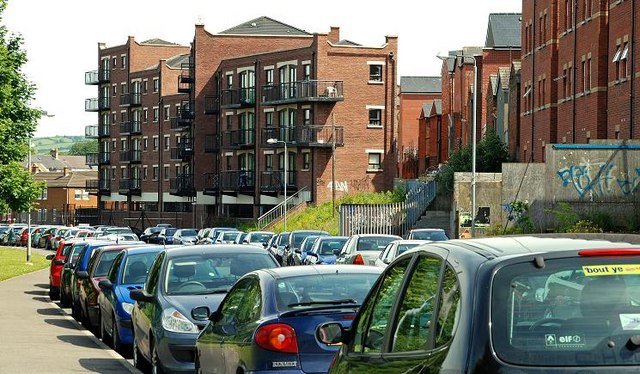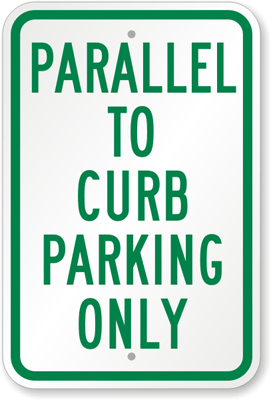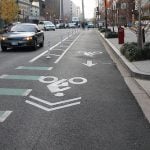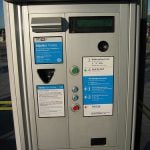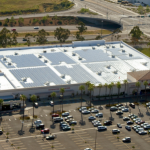How intelligent parking assist systems work
Utilizing sensors and precise calculations, many cars can now parallel park themselves (via 1stfun.com).
It’s all too familiar. Creeping down my own street, my eyes dart back and forth. I’ve been past my house five times seeking refuge in a modest street parking spot fit perfectly for a mid-size sedan. It’s college bowl season and I’m stuck a few long yards away from my couch protected by an defensive line of mid-sized sedans.
Times like these I wish I had a SmartCar. Or better yet, a motorcycle. Then, I could just inconspicuously slip between that three foot gap some jerk left between his Mercedes and a 1980 Ford tank. Why does he need so much space?!
Does this look like your street every morning?
Wouldn’t it be nice if this wasn’t a daily occurrence? We face parking battles multiple times a day in the eternal war for curb space. It’s just such a waste of time. While automated parking garages and better public transport are improving the parking landscape, what else is there for the people outside on the street today? We need more space and fewer accidents.
The answer is technology, of course. Parallel parking is a simple geometry game of angles and curves. Many car companies are using radar, cameras, and sonar sensors to reduce the stress of street parking, reduce accidents, and increase efficiency.
An acquired skill can now be bought. (Via MyParkingSign.com)
Ford calls their system the Active Park Assist, while Toyota dubs theirs the Intelligent Parking Assist System. BMW has multiple names and Mercedes Benz’ system sounds like a dub-step band being called Parktronic.
There are other systems with other fancy names, but they’re all comprised of sensors that detect the car in front of your parking space, the one behind, and the curb to the side. These sensors determine the best way to turn your tires and find that sweet spot and exact turn radius — moves that once exposed your parallel prowess or ineptness.
The driver will pull up to a spot, initiate the computer parking assist, and then car takes over. The steering wheel moves, almost eerily, by itself, while the driver regulates the speed of the vehicle using only the brake pedal while the idle acceleration moves the vehicle.
In case something goes wrong, you can still stop. Your foot is meant to be on the brake at all times during the process. Early versions of computer aided parking couldn’t recognize things like cats or pedestrians very well, causing obvious concern.
Technology has gotten better in the last decade, as companies continue to test and learn from their mistakes. However, nothing can beat a good set of eyes in an emergency.
Parallel parking is a hassle and crowded curbsides could be made more efficient with this new technology. We don’t have to rely on human skill and politesse to conserve the most amount of precious space. Parking assist technologies aid drivers to make perfect turns, thus creating more space for the rest of us. Hundreds of spaces are wasted every day from bad parking jobs. Conversely, many people get stuck or struck in accidents.
Parallel parking is an art. Squeezing into that perfect spot with two wheel turns is an achievement, worthy of praise and a high five. Some will feel loss at yet another human talent overshadowed by robotic perfectness in the name of efficiency and convenience.
(But who cares, it’s Thursday, and the Fiesta Bowl is almost on.)
-A. Roitman
Related articles
Related Posts
Category: Parking Tech












